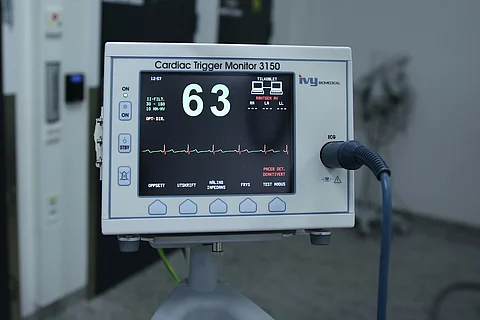

In 2020, World Health Organisation stated that roughly around 17.9 million deaths were caused due to underlying cardiovascular diseases (CVD) [1]. Due to the surge in CVD patients, the survival rate after heart failure has improved over time. Although we have modified our resources, 50% of these patients die of heart failure within 5 years [2]. Eventually, many of these fall into Stage 'D' of the ACCF/AHA Guidelines which is termed advanced heart failure. The survival probability of such patients is increased with technological interventions.
There are constant efforts made to prevent, maintain and eliminate the risk of mortality with the help of cardiac implantable electrical devices (CIEDs). The types of CIEDs are pacemakers, implantable cardioverter defibrillators (ICDs), and cardiac resynchronization therapy (CRT) devices. CRTs come in two varieties: CRT pacers (CRT-P) and CRT defibrillators (CRTD). The devices are used strategically for various patients to generally improve quality of life along with reducing mortality risk. Interruption in these devices can cause immediate and serious fatal complications. The American Heart Association has various guidelines for the implantation, maintenance, and withdrawal CIEDs in advanced heart failure patients. The complexity of this subject grows in patients terminally ill patients. Hence, in 2010 the Heart Rhythm Society, in association with the European Heart Rhythm Association, released a statement on the ethical, legal, and religious principles of no management of CIEDs for end-of-life or withdrawal of therapy.
The initial discussion about implantation should be done with the patient and they remain in power to decide. Unfortunately, most patients are informed about implantation at first as they are in a compromised state, and usually, the decisions are made by family and practitioners. Many a time these devices are used as bridge therapy or destination therapy for the patient waiting for a transplant.
Many patients with CIEDs voluntarily request the deactivation of their devices toward the end of life. In patients with ICD, the tolerance to sustain pain is also less with time. The decision of deactivation can also be made by the family as it is physiologically disturbing to them. This can be concerning to the practitioners as the deactivation of pacemaker function towards the end of life can come under the blanket of assisted dying, analogous to voluntary euthanasia [3]. It is unethical to withdraw any treatment that becomes a part of the patient's "self", and some of these devices don't come under that category. Many practitioners also have a right to refuse CIEDs therapy to the patient as the slip in congestive heart failure, sepsis, multiple organ failure, etc. The US states that ethically and legally, there are no distinctions between declining CIED therapy and requesting its withdrawal [3]. On the other hand, the temporary deactivations of devices are done for the temporary comfort of the patient. However, this can deteriorate the patient's health shortly. In such cases, the practitioner is often in a dilemma. Hence, this can be considered a grey area in this subject.
In conclusion, CIEDs have many beneficial therapeutic interventions. But along with that, they might not improve the patient's condition at all, but rather cause further damage. When death is imminent, these devices complicate the process of dying. The discussion of this topic is made of different school of thought but need strict ethical guidelines which are globally identical.
Follow the Author on MedBound: Darshana Vinod Rane (@DarshanaRANE10)
References:
1. https://www.who.int/health-topics/cardiovascular-diseases/#tab=tab_1
2. Roger VL, Go AS, Lloyd-Jones DM, et al. Heart disease and stroke statistics – 2012 update: a report from the American Heart Association. Circulation 2012; 125:e2–e220.
3. Mina M. Benjamin, MBBChcorresponding author, and Christine A. Sorkness, MD. Practical and ethical considerations in the management of pacemaker and implantable cardiac defibrillator devices in terminally ill patients. Proc (Bayl Univ Med Cent). 2017 Apr; 30(2): 157–160.
